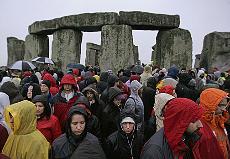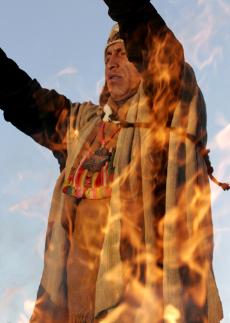Many people have heard the word “solstice.” It may have been overheard in conversation or on the news. As a result, some confusion may then arise. Is it a holiday? An astronomical event? A period of the year? The answer to this is not so simple. Solstices occur twice a year when the Earth’s axis is most adjusted closest to or farthest from the sun. This causes the sun to reach two extremes: the northern and the southern. At the solstice, the sun’s noticeable movement toward the north or south comes to a temporary halt.
The summer solstice also is known as the northern solstice. It occurs in June at the time when the sun is exactly over the Tropic of Cancer, and is the longest day (and, consequently, the shortest night) of the year.
The period in June during which the summer solstice occurs is referred to as midsummer. Midsummer’s Day is the day on which the solstice is celebrated, even though it is about three days after the actual solstice.
Midsummer’s Day is also known as St. Jean Baptiste Day or St. John’s Day. This name refers to the Christianized aspect of the celebration. In Europe, the day also goes by the Nativity of St. John the Baptist and St. John’s Eve festivals.
On the opposite end of the spectrum are Neo-Pagans who also celebrate the solstice. To them, it is referred to as Litha, or the fire festival. Midsummer is one of the last pagan holidays celebrated in Europe today.
The summer solstice is celebrated by numerous countries and differs according to country and culture. In Norway, it is called Sankthansaften, celebrated this year on June 23. A second name used is Jonsok, meaning “John’s wake” and related to Catholicism.
Although history of the holiday is known to include pilgrimages to sacred monuments and holy springs, it is mostly celebrated as a secular holiday in modern times.
In Sweden, Midsummer’s Eve and Midsummer’s Day are observed June 19 until 25, and is often referred to as the year’s most important holiday. Events for the holiday include maypole dancing, future-predicting rituals and traditional dancing called the frog dance.
In Italy, the feast of St. John the Baptist has been observed since the time of the Renaissance in Florence, where St. John is the patron saint. It lasts three days this year, from June 21 until 24. A brilliant fireworks display is always shown during the celebration on the river of Turin.
The French celebration of the solstice often includes bonfires, relating back to the pagan rituals of the “fire festival,” although it is considered a Catholic holiday to remember St. John. In medieval times, the day was observed with cat-burning rituals.
This side of the Atlantic, involvement in Midsummer celebrations includes the NYC Swedish Midsummer celebrations held in Battery Park, New York City.
Ancient structures have been constructed to commemorate the solstices. Examples include Stonehenge, which is a perfect marker of summer and winter solstice times. Others are Maeshowe, located on the Orkney Islands of Scotland and Newgrange, a 5000-year-old circular temple in Ireland.
The solstice is indeed a worldwide holiday as well as an astronomical observance and a time period of June. Seeing that the most recent summer solstice has passed, perhaps next year can be celebrated with a few bonfires and maypole dances.

Druids, pagans and partygoers crammed into the mystic stone circle to meditate as they celebrate the summer solstice at the Stonehenge monument, England, June 21 in an effort to greet the sun on the longest day of the year in the northern hemisphere. (Lefteris PitaOrakis)








